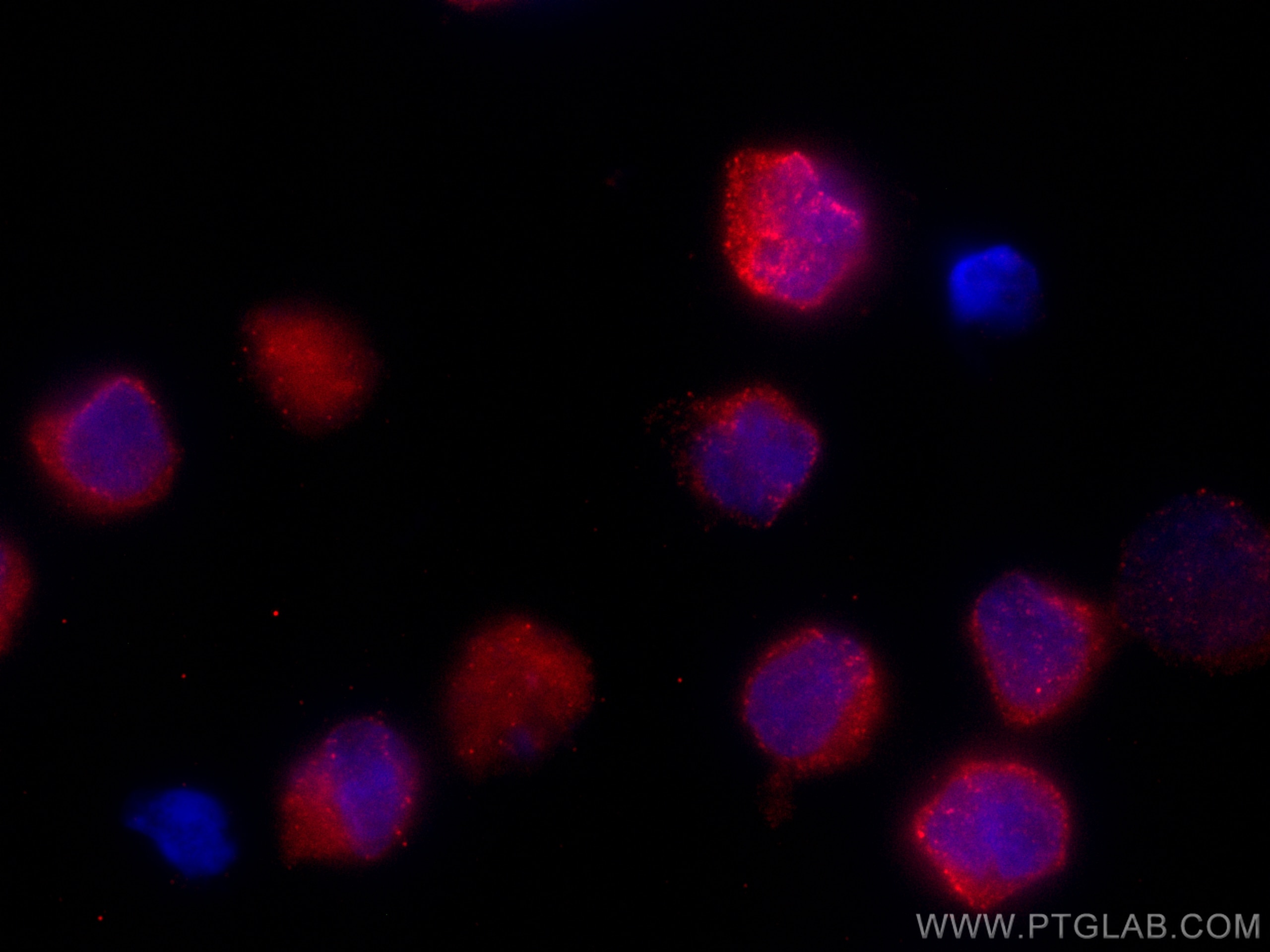Tested Applications
| Positive IF/ICC detected in | Raji cells |
Recommended dilution
| Application | Dilution |
|---|---|
| Immunofluorescence (IF)/ICC | IF/ICC : 1:50-1:500 |
| It is recommended that this reagent should be titrated in each testing system to obtain optimal results. | |
| Sample-dependent, Check data in validation data gallery. | |
Product Information
CL594-66142 targets IL-4 in IF/ICC applications and shows reactivity with human samples.
| Tested Reactivity | human |
| Host / Isotype | Mouse / IgG2a |
| Class | Monoclonal |
| Type | Antibody |
| Immunogen |
CatNo: Ag9940 Product name: Recombinant human IL-4 protein Source: e coli.-derived, PET28a Tag: 6*His Domain: 24-153 aa of BC070123 Sequence: GHKCDITLQEIIKTLNSLTEQKTLCTELTVTDIFAASKNTTEKETFCRAATVLRQFYSHHEKDTRCLGATAQQFHRHKQLIRFLKRLDRNLWGLAGLNSCPVKEANQSTLENFLERLKTIMREKYSKCSS Predict reactive species |
| Full Name | interleukin 4 |
| Calculated Molecular Weight | 153 aa, 17 kDa |
| Observed Molecular Weight | 18 kDa |
| GenBank Accession Number | BC070123 |
| Gene Symbol | IL-4 |
| Gene ID (NCBI) | 3565 |
| RRID | AB_2934716 |
| Conjugate | CoraLite®594 Fluorescent Dye |
| Excitation/Emission Maxima Wavelengths | 588 nm / 604 nm |
| Form | Liquid |
| Purification Method | Protein A purification |
| UNIPROT ID | P05112 |
| Storage Buffer | PBS with 50% glycerol, 0.05% Proclin300, 0.5% BSA, pH 7.3. |
| Storage Conditions | Store at -20°C. Avoid exposure to light. Stable for one year after shipment. Aliquoting is unnecessary for -20oC storage. |
Background Information
IL4 is a cytokine produced by CD4+ T cells in response to helminthes and other extracellular parasites. It promotes the proliferation and differentiation of antigen presenting cells. IL4 also plays a pivotal role in antibody isotype switching and stimulates the production of IgE. This cytokine has been applied in the treatment of autoimmune disorder like multiple myeloma, cancer, psoriasis, and arthritis. IL4 has also been extensively applied to inhibit detrimental effect of Th1. It may promote the growth of epithelial tumors by mediating increased proliferation and survival.
Protocols
| Product Specific Protocols | |
|---|---|
| IF protocol for CL594 IL-4 antibody CL594-66142 | Download protocol |
| Standard Protocols | |
|---|---|
| Click here to view our Standard Protocols |




